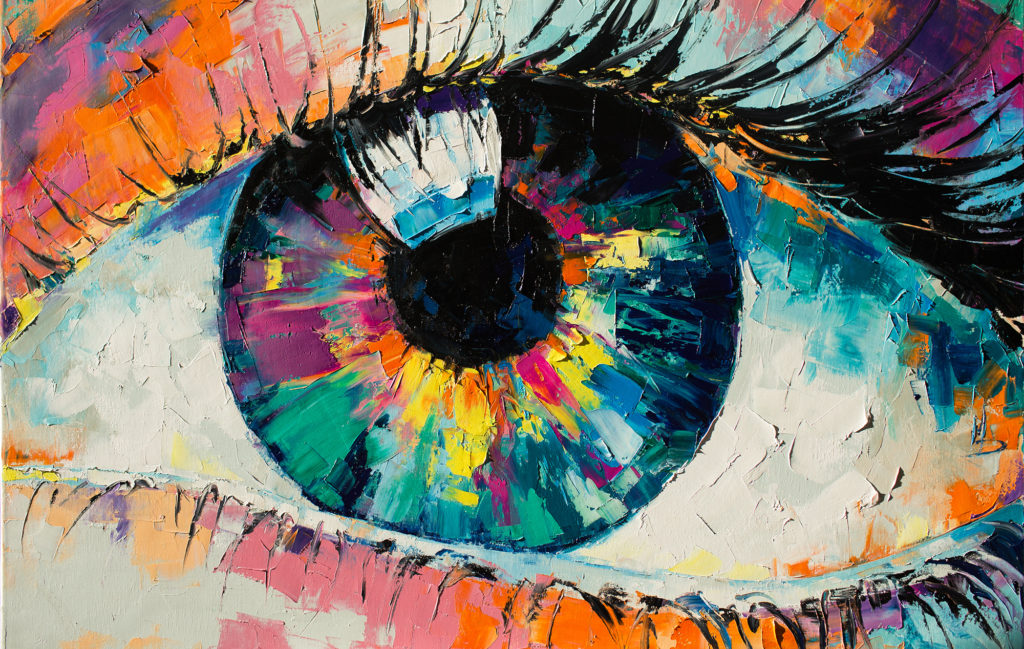Checking out the Influence of Trump Art on Contemporary Political Commentary
Checking out the Influence of Trump Art on Contemporary Political Commentary
Blog Article
Exploring the Diverse Globe of Artistic Expression: From Surrealism to Abstract Realistic Look
In the realm of artistic expression, from the dreamlike landscapes of surrealism to the detailed play of light and kind in abstract realistic look, artists have continually pushed the borders of imagination and imagination. Each motion holds a distinct lens whereby the world is watched and translated, supplying a look right into the depths of human feeling, perception, and assumed. As we explore the diverse globe of art, we are provided with a tapestry of designs, techniques, and approaches that test our understanding and provoke reflection. The journey with these varied forms of creative expression promises to decipher an abundant tapestry of visual storytelling and intellectual questions that mesmerizes the mind and mixes the heart.
Surrealism: Unleashing the Subconscious
Surrealism, a progressive artistic movement of the 20th century, explored the midsts of the subconscious, unveiling a globe of dream-like imagery and unusual juxtapositions. Spearheaded by artists like Salvador Dali, René Magritte, and Joan Miró, Surrealism sought to challenge the standard methods of seeing and comprehending art. With methods such as automatism and desire evaluation, Surrealist artists intended to use the subconscious mind to disclose hidden truths and wishes.
One of the crucial elements of Surrealism was the focus on the irrational and the incredible. By incorporating unanticipated elements in their works, Surrealist musicians intended to create a sense of disorientation and surprise in the customer. This interruption of logic and reason was meant to provoke a much deeper expedition of the subconscious and the secrets of the human mind.
Abstract Realism: Redefining Perception
Testing typical imaginative limits, Abstract Realism redefines perception via the blend of identifiable aspects with abstract forms. This innovative strategy to art integrates the representational accuracy of realism with the imaginative flexibility of abstraction, providing viewers an unique aesthetic experience that triggers them to question their assumption of truth.
In Abstract Realism, musicians aim to record the significance of their subjects while also instilling their deal with a sense of deepness and intricacy with abstract elements. By mixing the acquainted with the unknown, these musicians welcome target markets to engage with their items on multiple degrees, motivating them to explore the subtleties of shade, texture, and kind.

Cubism: Breaking Up Truth
Making use of fragmented perspectives and geometric types, Cubism revolutionized the artistic representation of truth in the early 20th century. This technique not just deconstructed fact yet also emphasized the flatness of the canvas, paving the way for future abstract art motions.

Cubism can useful source be classified right into 2 major stages: Analytical Cubism, characterized by monochromatic color pattern and intricate, fragmented forms; and Synthetic Cubism, which incorporated collage elements and brighter colors into the compositions. Through these distinct phases, Cubism influenced not only paint yet additionally layout, sculpture, and design. trump art. Its influence resounded throughout the art world, inspiring artists to explore brand-new means of interpreting and standing for the globe around them
Expressionism: Emotions on Canvas
Discovering the midsts of human emotions through meaningful and brilliant brushstrokes, Expressionism became an extensive imaginative motion in the very early 20th century. Unlike previous art activities that focused on depicting the exterior world, Expressionism explored the interior world of the artist's psyche, intending to evoke raw feelings and provoke natural feedbacks from audiences.
Expressionist musicians, such as Edvard Munch, Egon Schiele, and Emil Nolde, turned down conventional notions of appeal and realism for distorting form and shade to share subjective sensations. The use of overstated brushwork, bold shades, and altered figures aided create a feeling of worry, alienation, or enthusiasm in their jobs.
One of the most renowned examples of Expressionism is Munch's "The Scream," which catches the intense stress and anxiety and misery of modern life with its swirling, altered figure against a blood-red sky. Through their psychologically billed works, Expressionist artists looked for to challenge standard imaginative norms and offer a home window right into the turbulent depths of the human spirit.
Contemporary Art: Developing Point Of Views
One of the specifying qualities of modern art is its consistent evolution and capability to adjust to transforming social landscapes. Artists are increasingly integrating modern technology right into their practice, blurring the lines between the electronic and physical worlds. This blend of tools allows for innovative ways of storytelling and involving with target markets in an extra interactive fashion.
Moreover, contemporary art commonly functions as a system for social discourse, addressing pressing issues such as identity, politics, and the environment. Artists are using their work to provoke and stimulate essential Source discussions idea, clarifying the intricacies of the globe we stay in. As viewpoints remain to evolve, contemporary art stays a influential and dynamic force in shaping our cultural landscape.
Conclusion
In final thought, the globe of creative expression includes a large range of activities and designs, each with its very own one-of-a-kind strategy to conveying meaning and feeling. From surrealism's expedition of the subconscious to abstract realism's redefining of understanding, and from cubism's fragmentation of reality visit here to expressionism's representation of feelings, art remains to progress and challenge point of views - trump art. Contemporary art shows the ever-changing globe we live in, providing new means to analyze and comprehend the complexities of our reality
As we discover the complex globe of art, we are provided with a tapestry of styles, techniques, and viewpoints that test our understanding and provoke consideration. Its impact resounded across the art world, motivating artists to explore brand-new means of standing for the world and analyzing around them.
Report this page